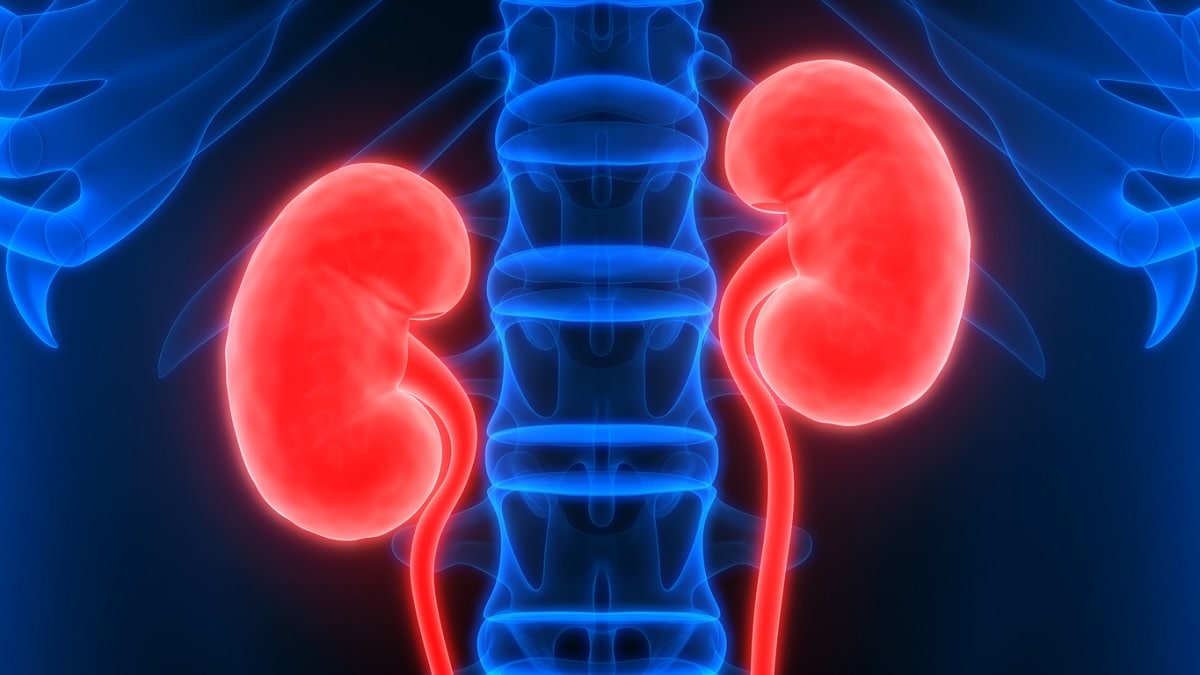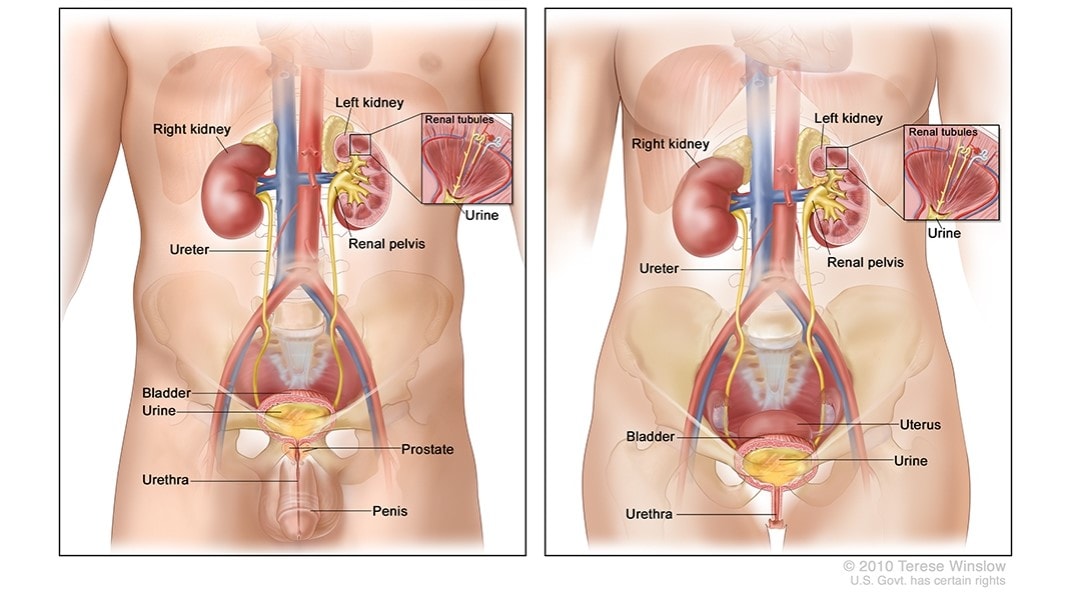Key points
- To lower your risk of kidney and renal pelvis cancers, keep a healthy weight.
- Don’t smoke, or quit if you do.
- Be very careful if you work with the chemical trichloroethylene.

Overview
Kidney and renal pelvis cancer is a disease in which cells in the kidney grow out of control. It can also be called renal cell cancer, as that is the most common type of kidney and renal pelvis cancer.

Illustration © 2010 Terese Winslow LLC. US government has certain rights. Used with permission. Contact artist at www.teresewinslow.com for licensing.
What are the kidneys?
The body has two kidneys, one on each side of the body, located behind the liver and stomach. The kidneys make urine, which is how the body washes liquid waste out of the body. The kidneys also play a role in controlling blood pressure and stimulating the bone marrow to make red blood cells.
What is the renal pelvis?
The renal pelvis is in the center of the kidney and is responsible for collecting the urine and feeding it into the ureters, two tubes that connect the kidneys with the bladder. The bladder holds urine until it leaves the body.
Symptoms
A person with kidney or renal pelvis cancer may or may not have one or more of the symptoms listed here. The same symptoms can also come from other causes. If you have any of these symptoms, talk to your doctor.
- Blood in the urine.
- A lump or swelling in the kidney area or abdomen.
- Lower back pain or pain in the side that doesn't go away.
- Feeling tired often.
- Fever that keeps coming back.
- Not feeling like eating.
- Losing weight for no reason that you know of.
- Something blocking your bowels.
- A general feeling of poor health.
Risk factors
Risk factors for kidney and renal pelvis cancers include:
- Being overweight or having obesity.
- Smoking.
- Having high blood pressure. It is not known whether the increased risk is due to high blood pressure itself or the medicines used to treat it.
- Taking certain pain medicines for a long time.
- Having certain genetic conditions.
- Having a long-lasting infection with hepatitis C.
- Having kidney stones.
- Having sickle cell trait, which is associated with a very rare form of kidney cancer (renal medullary carcinoma).
- Being exposed to a chemical called trichloroethylene, which is used to remove grease from metal.
Reducing risk
To lower your risk of kidney and renal pelvis cancers:
- Keep a healthy weight.
- Eat a healthy diet.
- Be physically active.
- Don't smoke, or quit if you do.
- Be very careful if you use certain kinds of chemicals, especially trichloroethylene. This chemical is used by workers in some jobs, like those that work with metals.
Statistics
The Data Visualizations tool makes it easy for anyone to explore and use the latest official federal government cancer data from United States Cancer Statistics. It includes the latest cancer data covering the US population.
Resources
- Kidney Cancer (National Cancer Institute)
- Renal Cell Cancer Treatment (National Cancer Institute)
- Transitional Cell Cancer of the Renal Pelvis and Ureter Treatment (National Cancer Institute)
- Wilms Tumor and Other Childhood Kidney Tumors Treatment (National Cancer Institute)
- Tobacco and Cancer (CDC)
- Obesity and Cancer (CDC)
